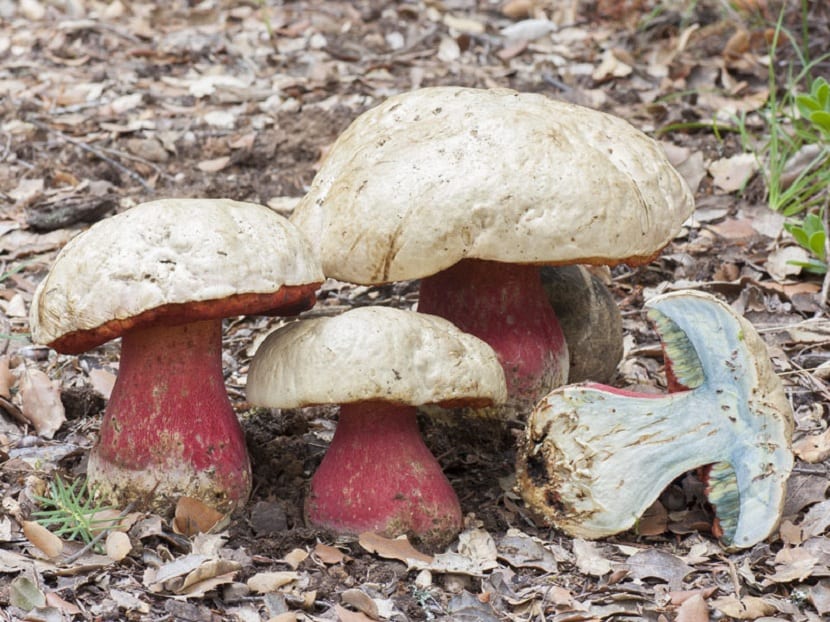
Among the amount of mushrooms that exist in the world, there is a section of poisonous mushrooms that they are not edible and that some are known and some are not. These mushrooms can be easily recognizable by their more attractive color or, conversely, pretend that they are edible and not be. Therefore, we must be very careful with what type of mushroom we eat. Today we are talking about a type of poisonous mushroom called Boletus satanas. Among the common names we find the ticket of satan.
It is a species of mushroom that is well known and feared for being toxic. However, not because it has that name is it too dangerous. You will be able to know more about Boletus satanas in this article.
Main characteristics of Boletus satanas
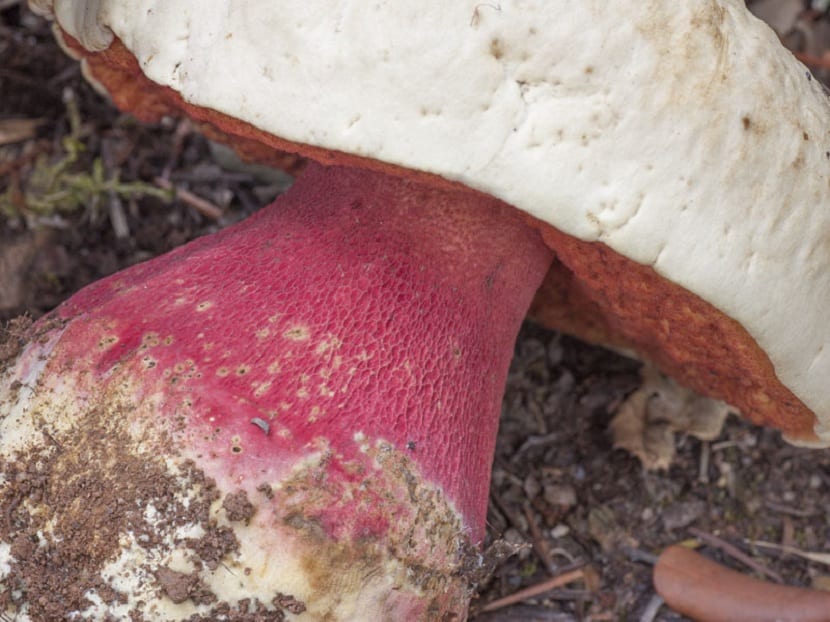
Like all mushrooms, it is characteristic for having a hat. In this case, it is capable of reaching about 30 cm in diameter, making it quite large. Its shape is convex and whitish in color. It has small yellowish tubes that, as it matures and develops they are turning olive in color. Their pores are also yellow when they are young, but turn orange and red when they are adults. These are perfect indicators of the age of the specimens.
It has a stubby foot that is yellow at the top and red-pink at the base. It is a mushroom covered by a reddish grid that can also be yellowish in color. Its flesh inside is whitish. It has a somewhat unpleasant smell for adults, although its taste is sweet.
It can be found in flat areas, among which the more open oak areas stand out where there are also holm oaks and the terrain is limestone. We are dealing with a thermophilic species. That is, he likes high temperatures. Therefore, it is a mushroom that appears in summer. This is also one of the reasons why he is called Satan. It is because, being thermophilic, the heat of winter is reflected where Satan lives.
It is the species of the genus Boletus with the most toxicity of all. Despite the name it has, it has never caused death to anyone who has ingested it. Since it is a detrimental and increasingly rare species, it is under protection. If ingested it causes some severe stomach problems.
Confusions between Boletus
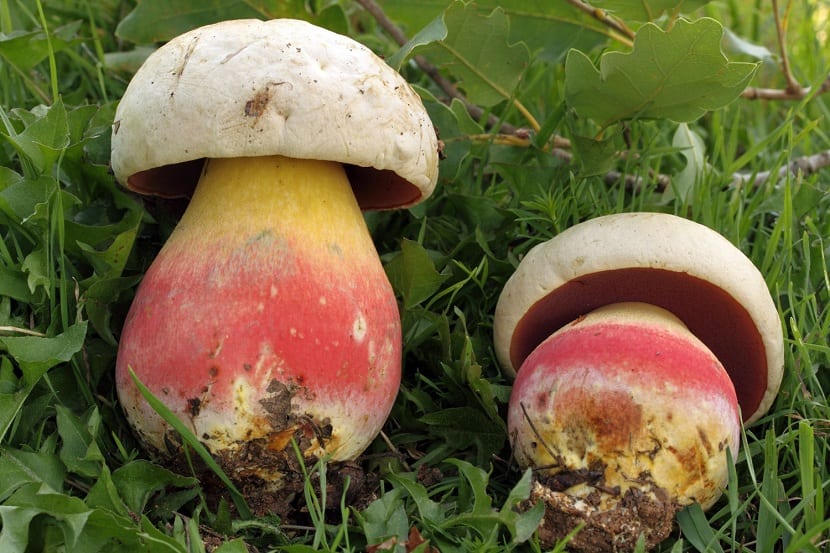
These mushrooms are very similar to others that belong to the same genus, so they are easily edible. For example, the species Boletus erythopus, also known as red foot, it is an edible mushroom. There are many people who have taken a Boletus satanas thinking it was red foot and have had stomach problems. To differentiate them, you have to see that the red foot has a reddish brown and dark brown hat and is covered by a velvety cuticle. This is what you should do so that you can differentiate one from the other because despite the similar appearance, one is edible and the other is not.
Another of the most common confusions of this mushroom is with the Boletus calopus. It is known by its common name bitter red foot. It is a variety of Boletus that has a pale yellow color. It has a very bitter taste and this taste intensifies if it is cooked. This makes the mushroom inedible.
It can also be confused with another species known as Boletus lupinus. This variety is rarer than the previous ones, so its confusion is less frequent. They are usually found in the summer and early fall season. It has colors like red, yellow, and purple. It gives off a rather unpleasant smell and both by the appearance and by the smell, nobody thinks about eating it. Poisoning by this mushroom is rare, even if it is toxic, since its appearance makes no one eat it.
What are edibles?
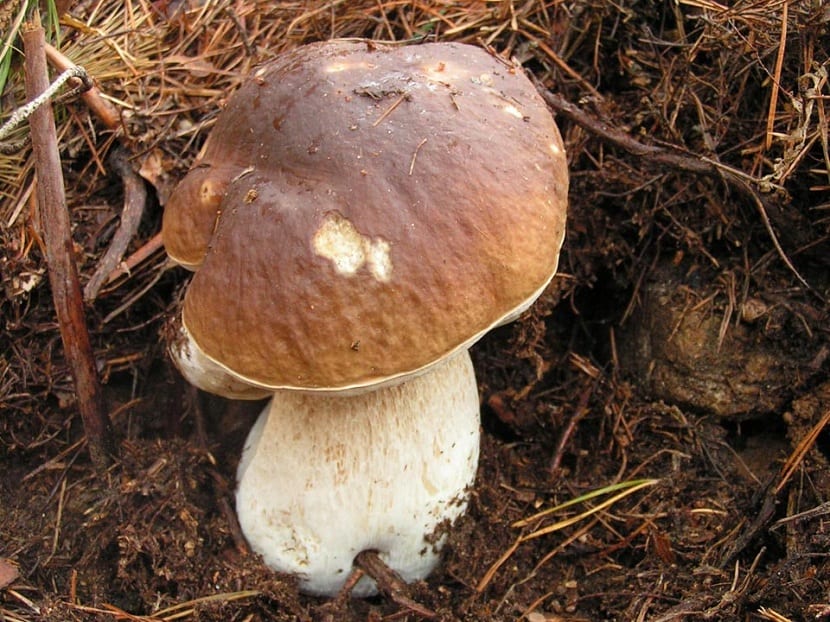
Since the boletales family has become well known and demanded species in the autumn season, it is essential to know which ones are poisonous and which ones are not. Although they are generally easy to identify, you have to be cautious and analyze the characteristics of each species very well before throwing them into the basket.
All mushrooms of the genus Boletus They have a classic laminar morphology with a spongy texture. This makes its identification relatively easy compared to other types of mushrooms that are more difficult to identify. Many of the mushrooms of the genus are edible and others not so much. As we have seen, the Boletus satanas It is toxic and its consumption can cause stomach and intestinal problems. Among the most common symptoms we find with diarrhea, vomiting, malaise, dizziness and tingling. However, no deaths have been reported due to consumption of this mushroom, so on the bad side, neither should we exaggerate and label them as deadly mushrooms of the devil.
Among the mushrooms of the genus Boletus that are edible we find:
- Boletus aereus. It is one of the best known and most consumed. The differences with other inedibles is the color of the hat. In this case it has a dark brown color reaching almost black. At a glance you can tell which mushroom is without fear.
- Boletus edulis. It is characterized by having a white flesh and a viscous hat. If the environment is humid, it will tend to have a light brown color and a slightly ocher color.
- Boletus pinophilus. It is of a more brownish reddish color and the flavor is quite good and appreciated by many people. It is usually found in the westernmost areas of the peninsula such as Extremadura, and the southwestern part of Castilla y León.
Toxic boletus
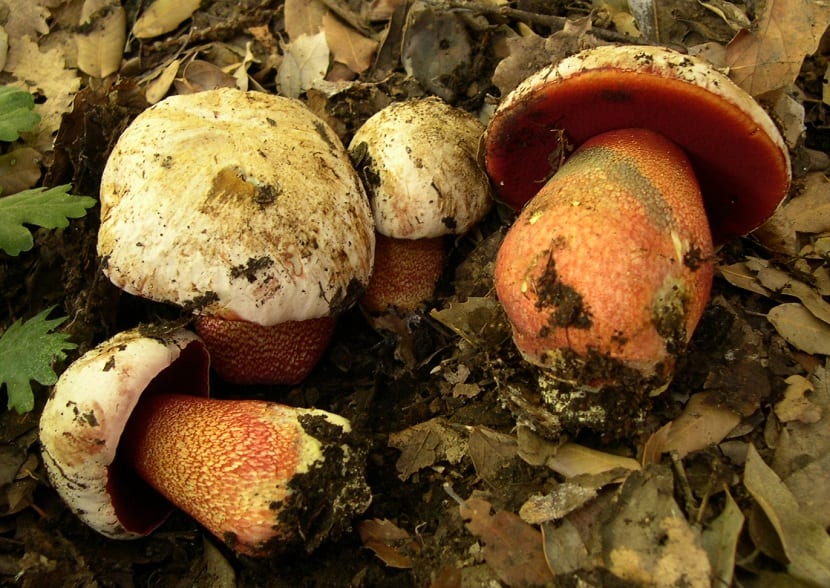
As we have seen, there are some that are edible, but others that are toxic. These are:
- Boletus satanas. We have already talked about its appearance and toxicity. It can be recognized when, when cut, its skin turns somewhat bluish.
- Boletus rhodoxanthus. It has an unmistakable yellow foot and turns orange and reddish when it grows. The skin also turns bluish when cut.
I hope that with this information you can know more about the Boletus satanas and other poisonous mushrooms.